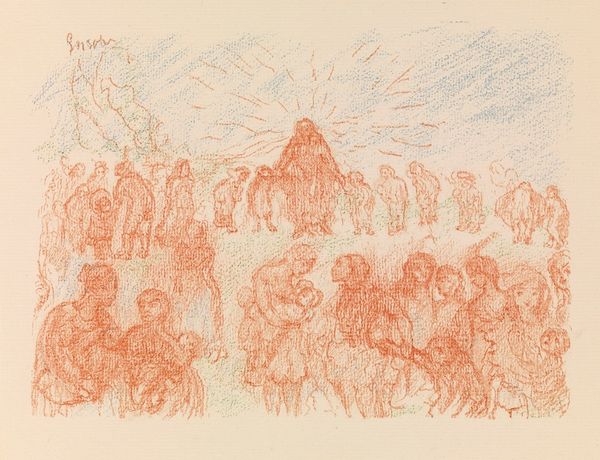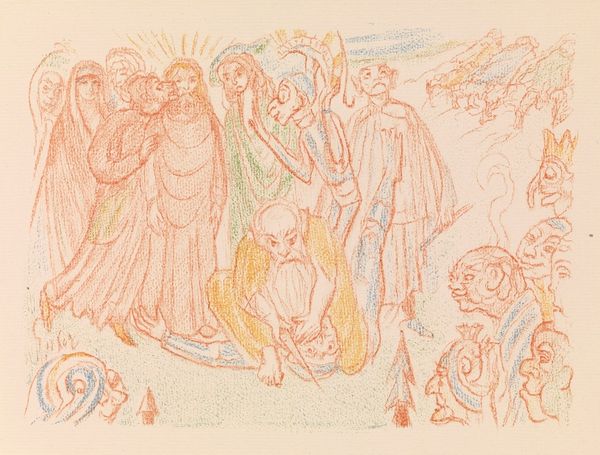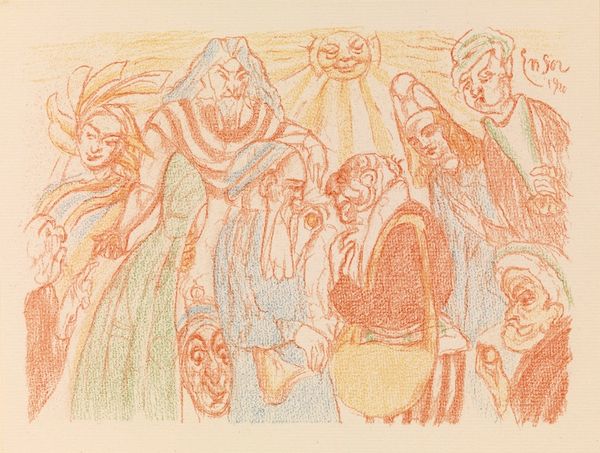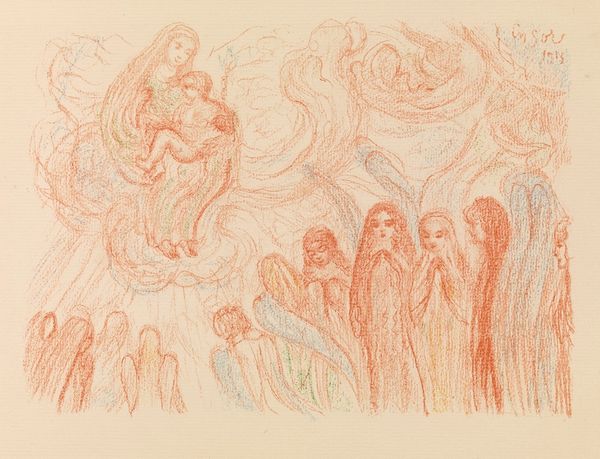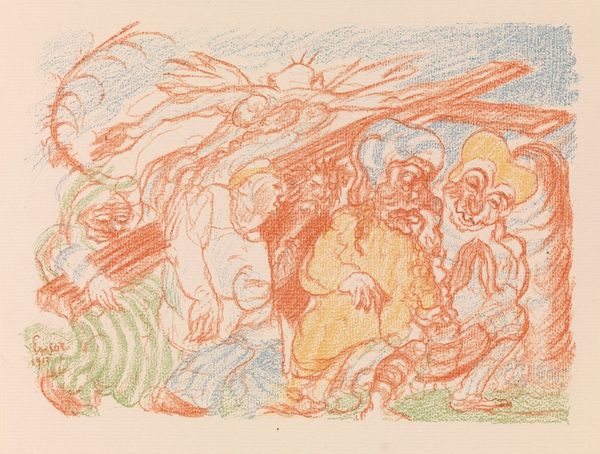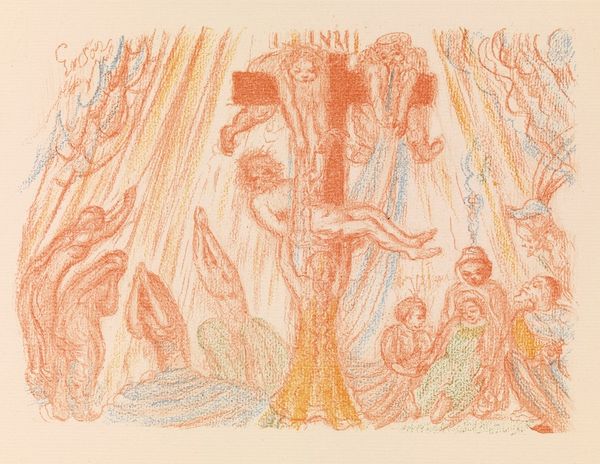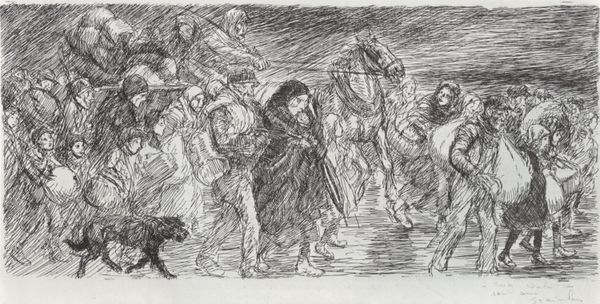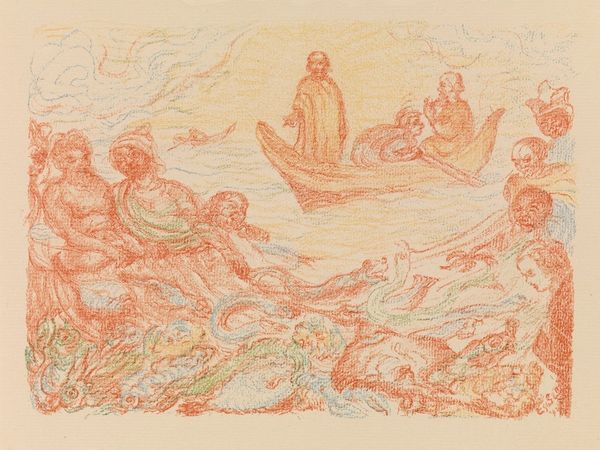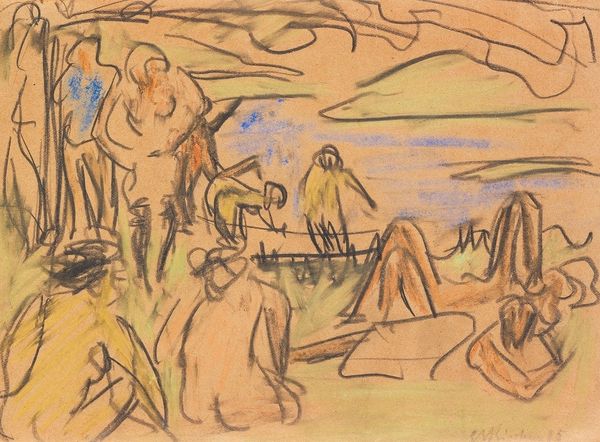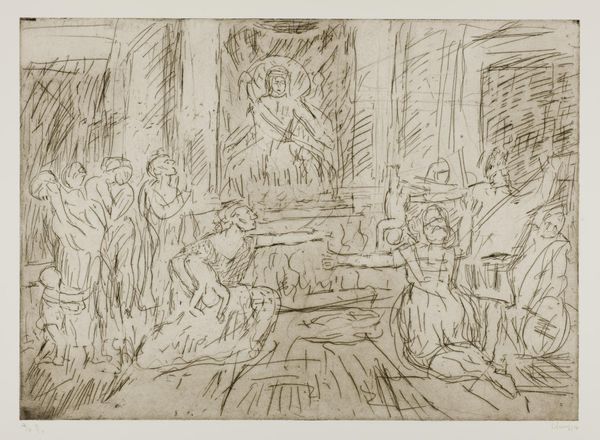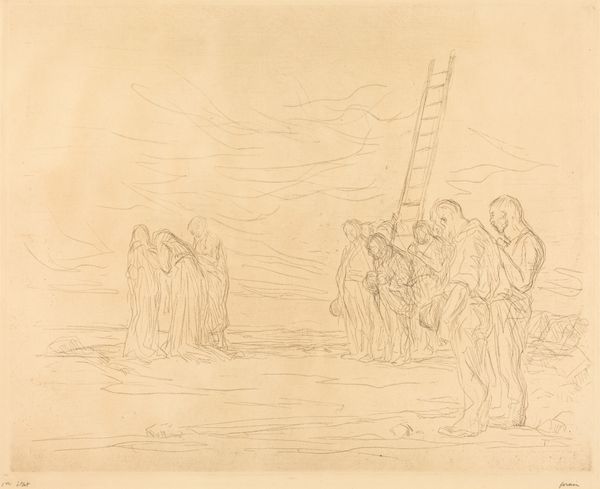
drawing, coloured-pencil, pastel
#
drawing
#
coloured-pencil
#
ink drawing
#
narrative-art
#
pen sketch
#
pencil sketch
#
landscape
#
etching
#
figuration
#
group-portraits
#
expressionism
#
pastel
Copyright: Public Domain: Artvee
Editor: We're looking at James Ensor's "The Return of the Calvary" from 1921, made with pastel and colored pencil. It’s a rather eerie, almost grotesque depiction of what seems like a procession. What do you see in this work? Curator: I see a powerful critique of societal structures and the nature of power itself. Consider the historical context: World War I had just ended, leaving Europe in ruins, both physically and morally. Ensor, who lived through the German occupation of Belgium, likely felt disillusioned. This work, though depicting a religious scene, is less about faith and more about the spectacle and the suffering inherent in systems of control. Notice how the figures seem both grotesque and pitiable? Editor: They definitely don’t look glorified, more like… tormented. Are you suggesting it’s a commentary on war? Curator: Perhaps not *just* war. But certainly, the work is deeply entwined with the sociopolitical anxieties of the time. Ensor, known for his use of masks and macabre imagery, was keenly aware of the performative aspects of power. Look at the crowd, their faces are contorted, almost theatrical. Could they represent a society complicit in its own oppression? Think about whose voices are often absent in these historical narratives. Editor: That’s fascinating. I was focused on the religious symbolism, but I see how it could be read through a broader social lens. I learned a lot by shifting perspectives here, from simply a biblical scene into a reflection of societal ills during a turbulent period. Curator: Exactly! Art can serve as a mirror reflecting not just beauty, but also the complex, often uncomfortable truths of our history. And hopefully, these conversations push us to be more engaged citizens in our contemporary world.
Comments
No comments
Be the first to comment and join the conversation on the ultimate creative platform.

